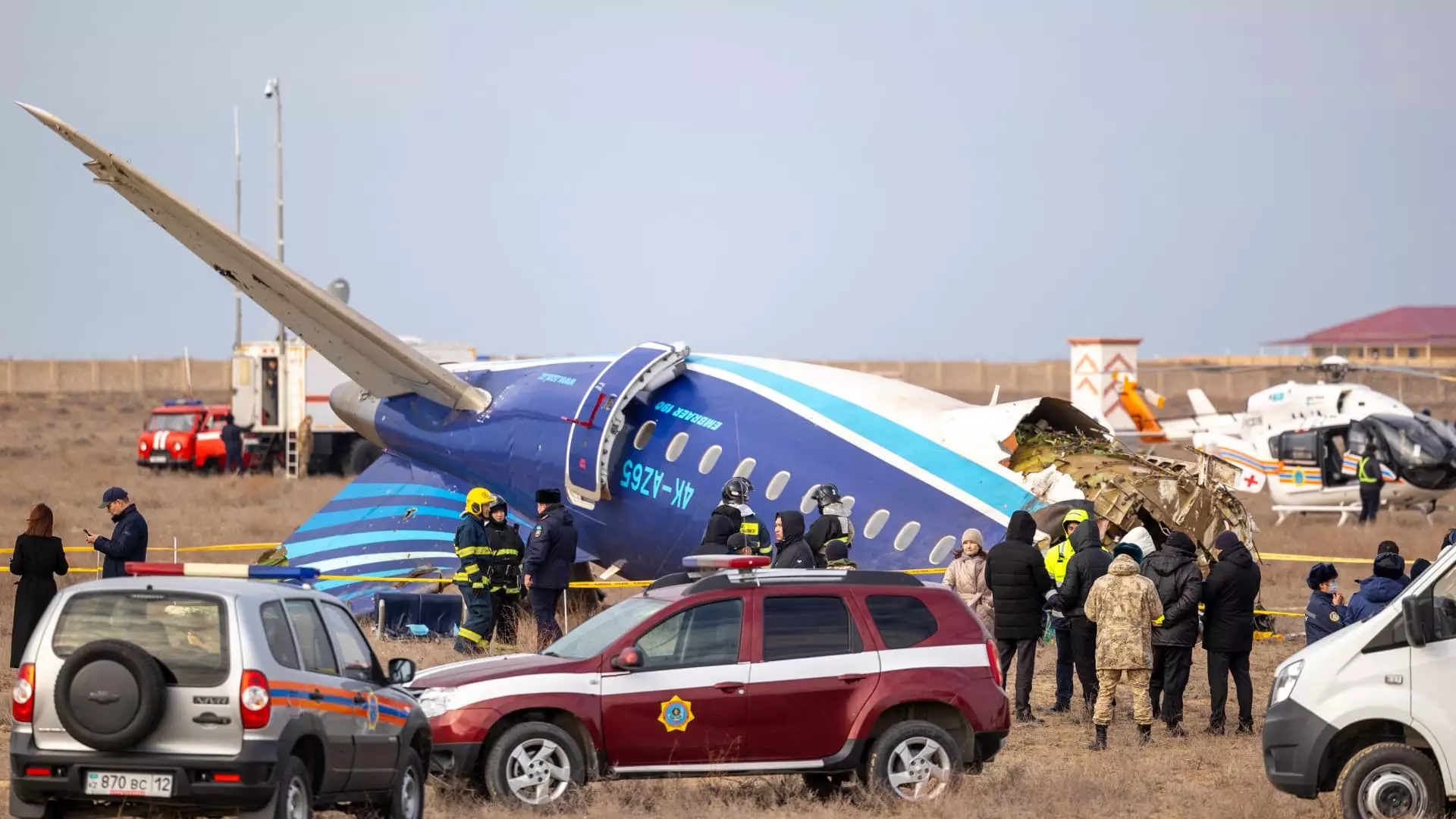On a fateful Wednesday, an Embraer passenger aircraft, operating under Azerbaijan Airlines, met with disaster while en route from Azerbaijan to Russia. This tragic incident claimed lives and left many injured. As we sift through the facts and implications of this event, it’s essential to understand not only what went wrong but also the surrounding circumstances that may have contributed to this aviation tragedy.
Details surrounding the crash indicate that the aircraft, carrying 62 passengers and five crew members, deviated significantly from its intended flight path. Reports suggest it ended up approximately three kilometers from the city of Aktau in Kazakhstan after likely experiencing an emergency maneuver possibly triggered by a bird strike. Such incidents are rare but can have dire consequences, reflecting the unpredictable nature of air travel.
Eyewitness accounts and video footage portray the aircraft descending hastily before erupting in flames upon impact with the Caspian Sea shore. The visual evidence is harrowing; bloodied survivors emerged from the wreckage of the fuselage. The swift response from Kazakhstan’s emergency services, who extinguished the ensuing fire and extended medical aid to the survivors, shines a light on the preparedness of local authorities. However, the chaotic scene raises questions regarding the initial emergency protocols and the aviation management preceding the crash.
The Embraer 190 jet initially took off from Baku, intended for Grozny, the capital of Chechnya. The flight’s spontaneity became stark when it was noted that during its journey, it made an unexpected detour, flying over the Caspian Sea before circling back towards Aktau. The diversion warrants scrutiny, especially in the context of concurrent drone activity that had recently disrupted air traffic in southern Russia. The overall situation raises concerns regarding airspace security amidst geopolitical tensions.
While the Russian aviation authority was quick to cite a bird strike as a probable cause, the broader implications of drone strikes affecting nearby airports cannot be overlooked. The closure of nearby airstrips due to ongoing drone threats adds a layer of complexity to the situation. As the plane deviated from safety, it brought to light the challenges facing pilots and airlines in maintaining a secure and reliable flight experience amid external threats.
In the aftermath of the crash, both Kazakhstan and Azerbaijan pledged cooperation in the ongoing investigation. Establishing a dedicated government commission signifies an earnest commitment to uncover the precise sequence of events leading up to the tragedy. This collaboration is vital, as it will help to identify any lapses in protocol or safety measures that could prevent future incidents.
Notably, the condolences expressed by heads of state, including Russian President Vladimir Putin and Azerbaijani President Ilham Aliyev, are a reminder of the shared human experience surrounding such tragedies. Their direct acknowledgment highlights the far-reaching consequences of aviation disasters that extend beyond national borders.
As the dust settles from the tragedy, the harrowing stories of survival emerge. With 32 individuals rescued from the wreckage, the account serves as a reminder of resilience in the face of calamity. However, the grim reality of fatalities casts a shadow over the survivors. Those in critical condition emphasize the urgent need for comprehensive healthcare response teams capable of addressing such emergencies.
Families of the deceased and injured victims face an uncertain emotional aftermath. The government’s assurance of assistance is crucial in navigating the fallout from such tragedies, but it remains unclear how effectively those impacted will be supported in the long term.
This devastating crash underscores the multifaceted challenges of aviation safety in a rapidly evolving geopolitical landscape. As investigations unfold and more details emerge, the global airline industry must reassess its protocols to mitigate risks related to aviation disturbances, external threats, and emergency responses. It is a somber reminder that while advancements in aviation technology have made air travel safer than in prior decades, the potential for unforeseen tragedies remains an ever-present reality. This incident should serve as an impetus for rigorous safety reforms and contingency planning to ensure that such heart-wrenching events become even rarer in the future.


Leave a Reply